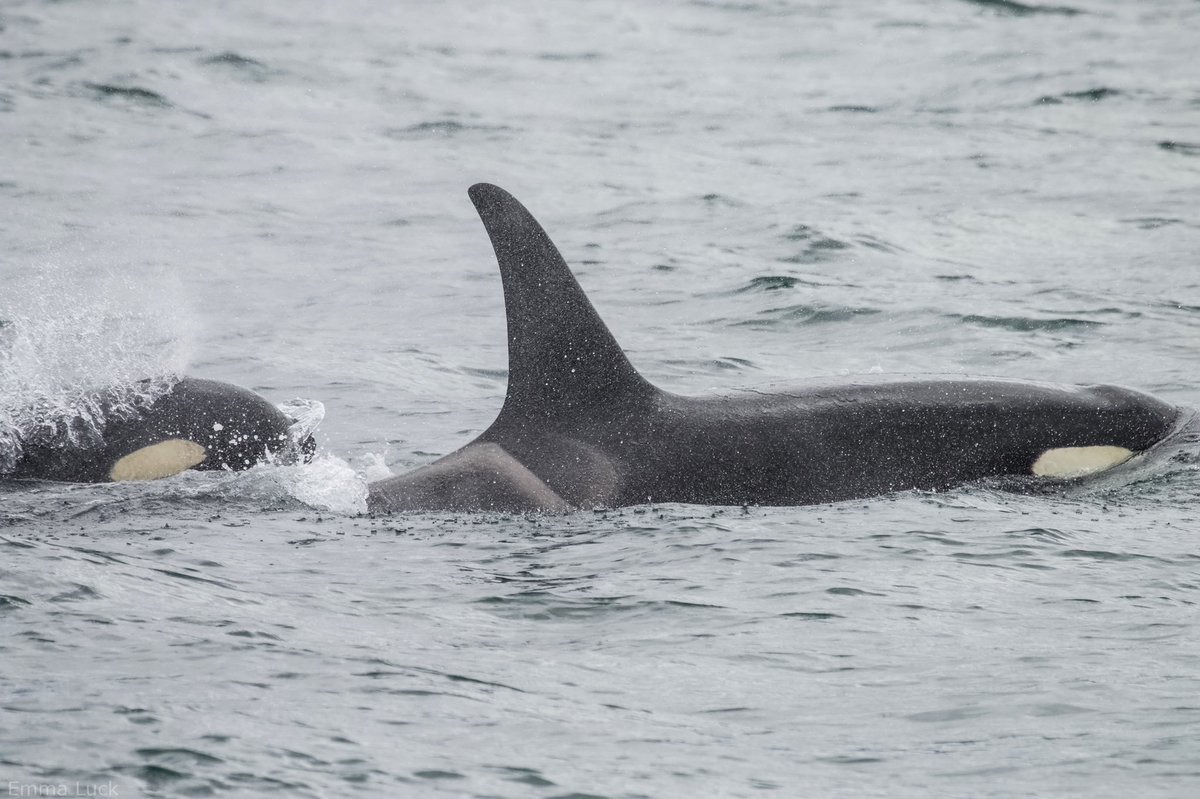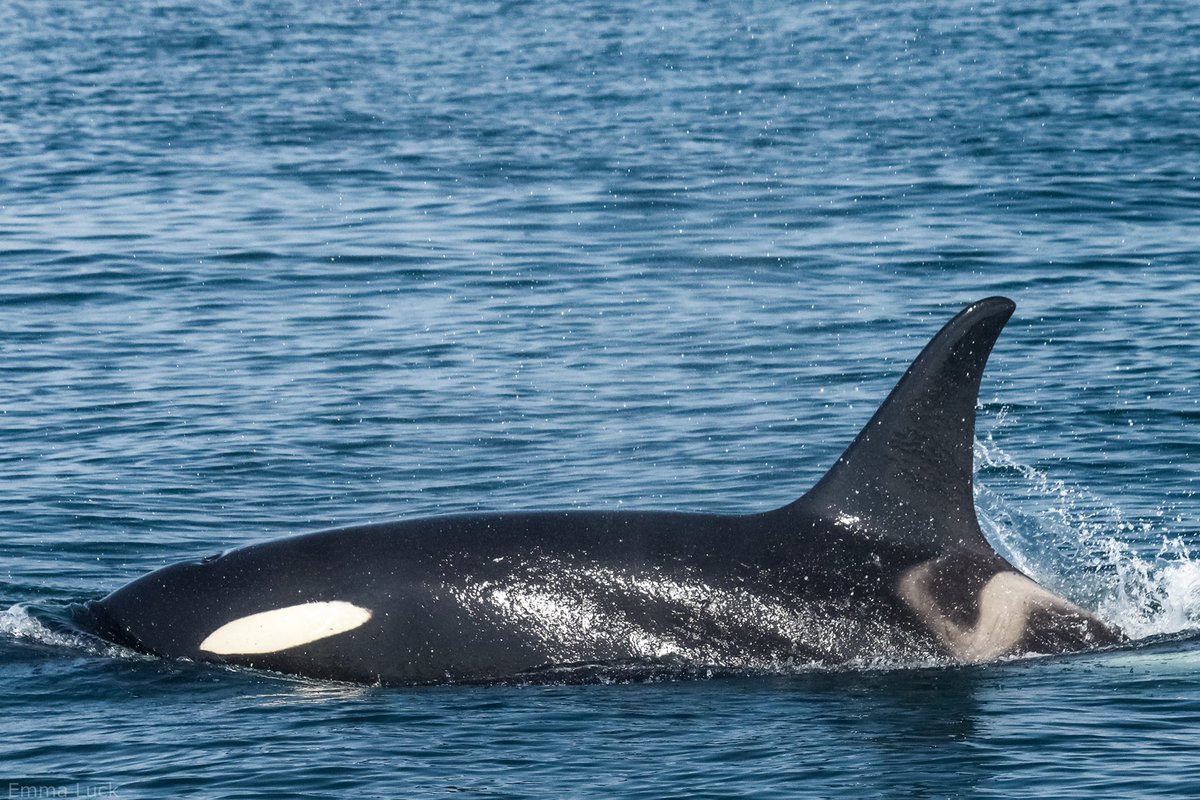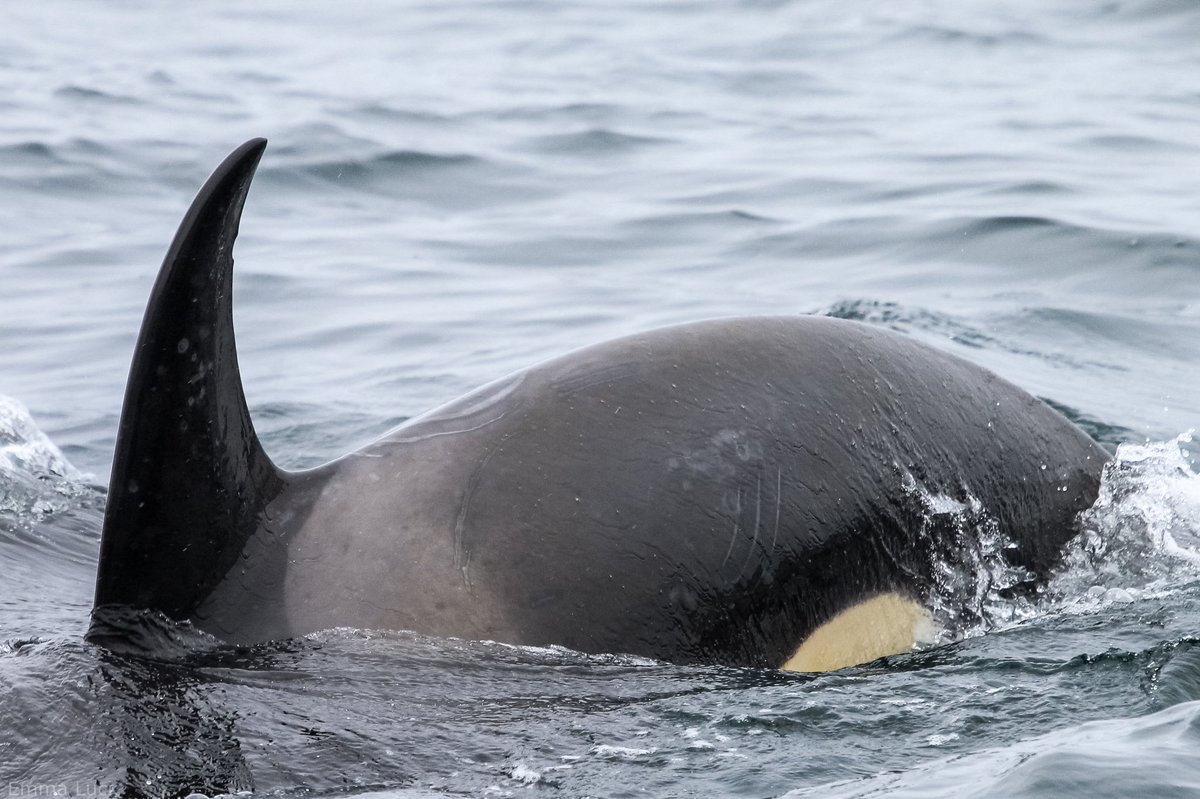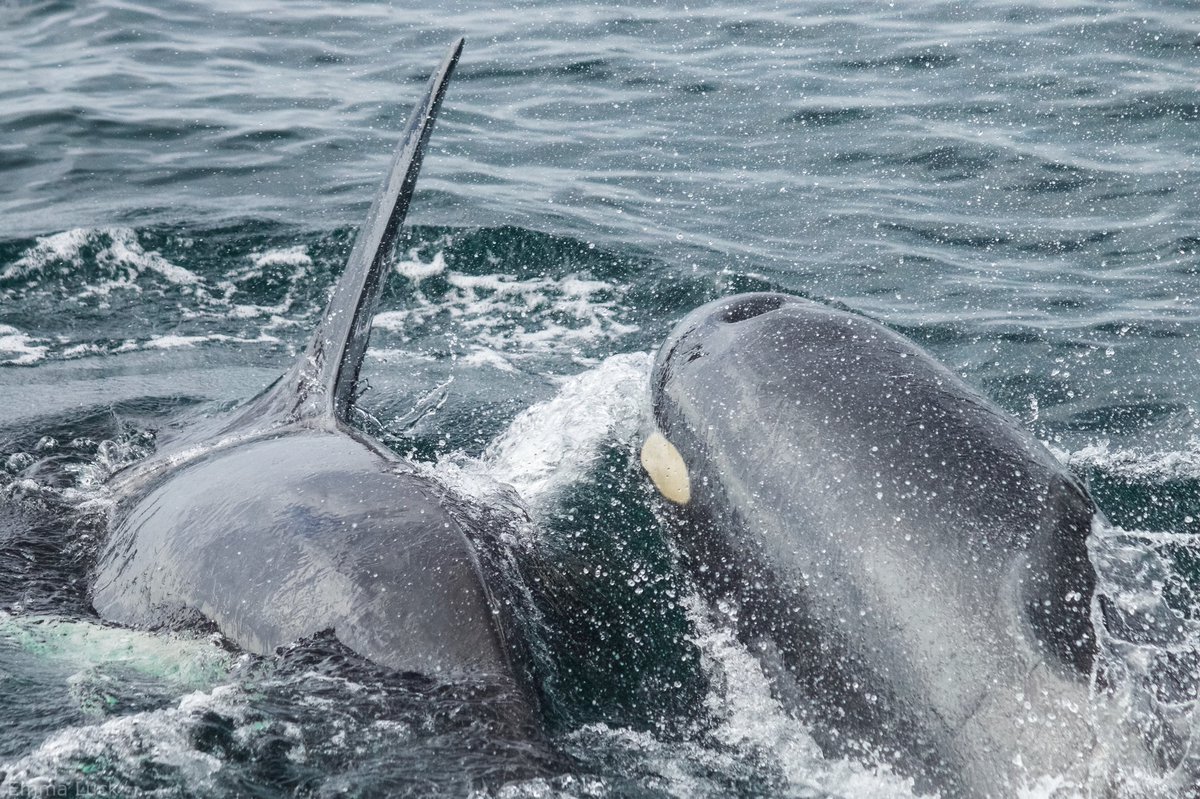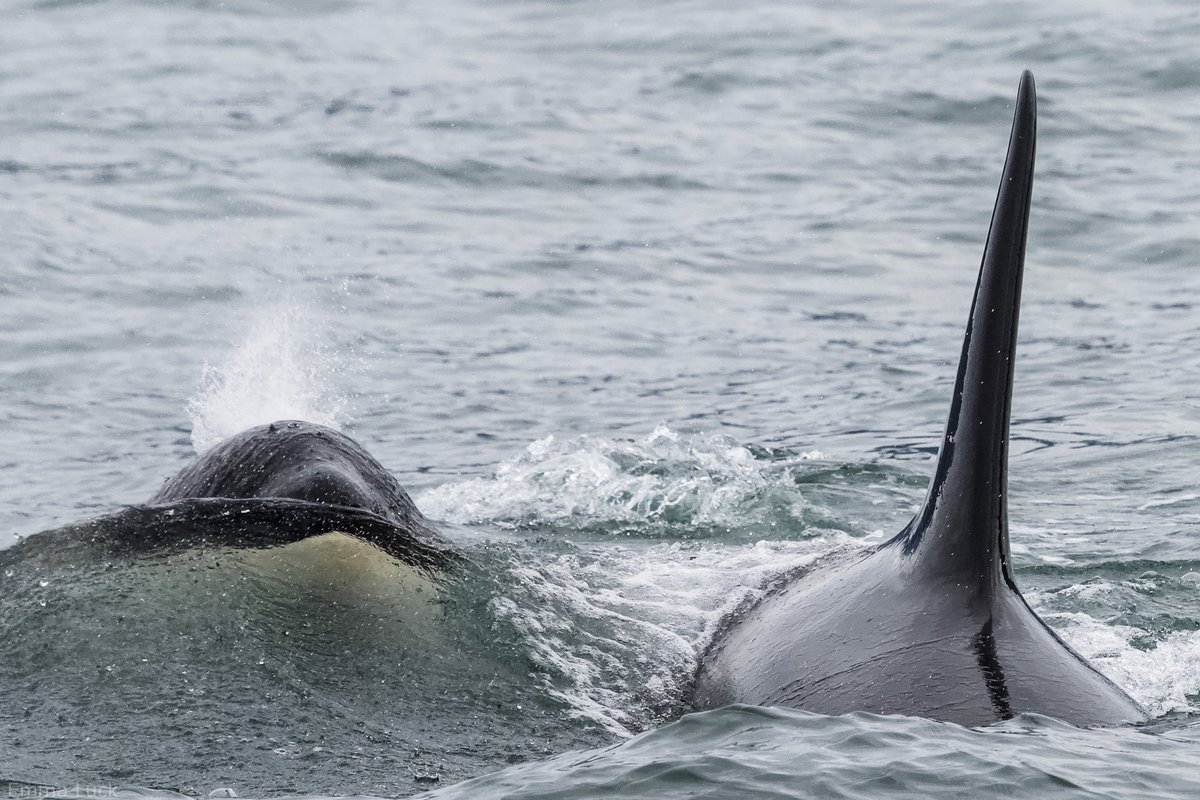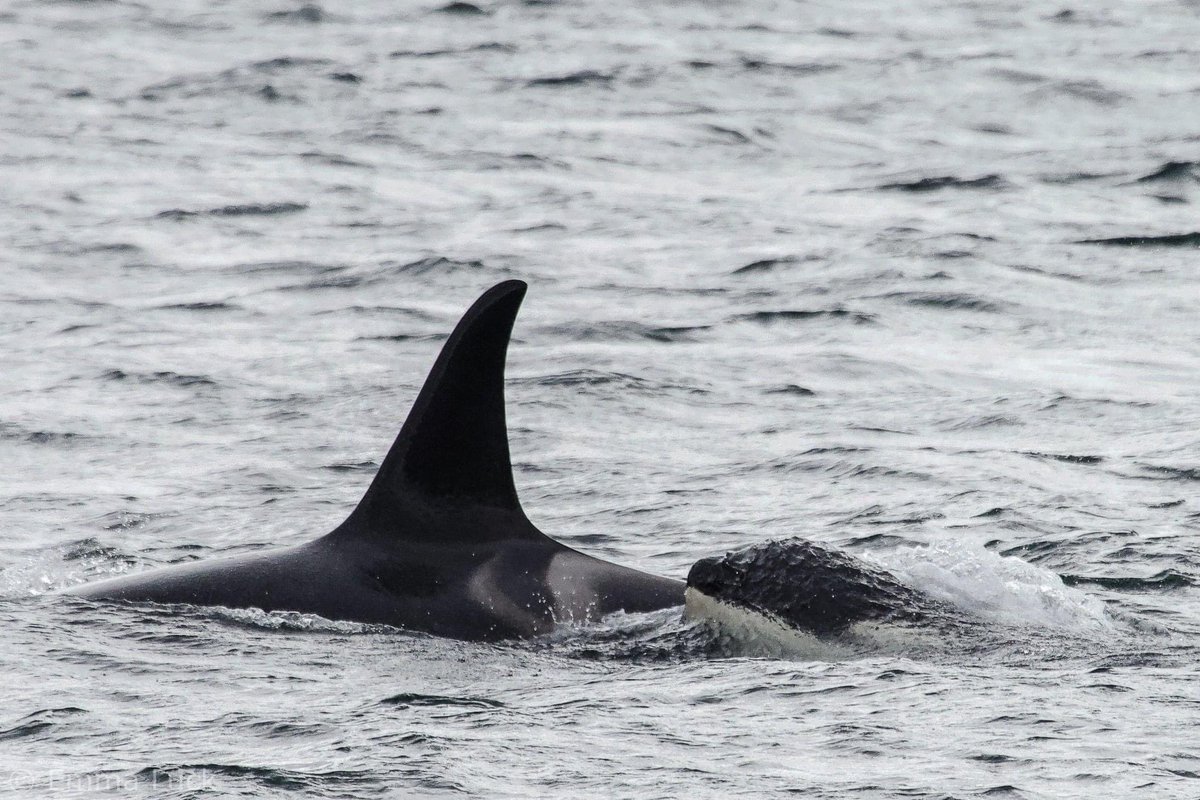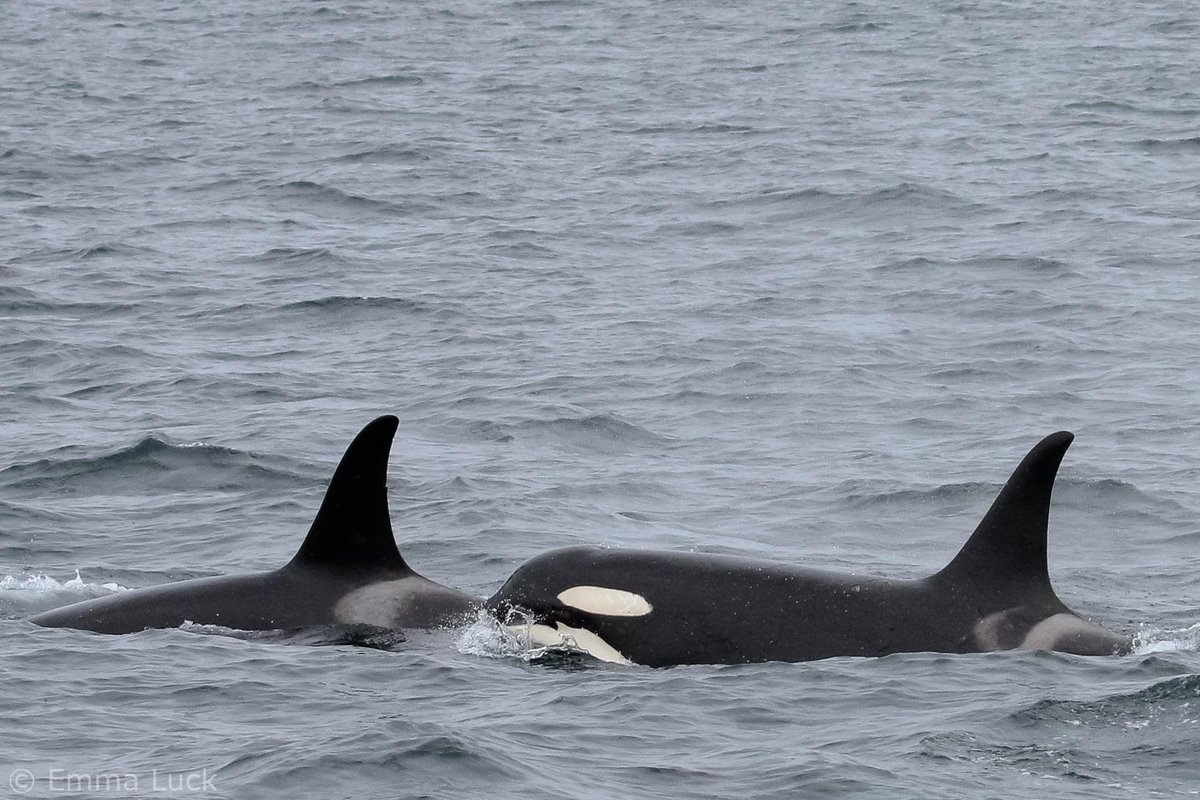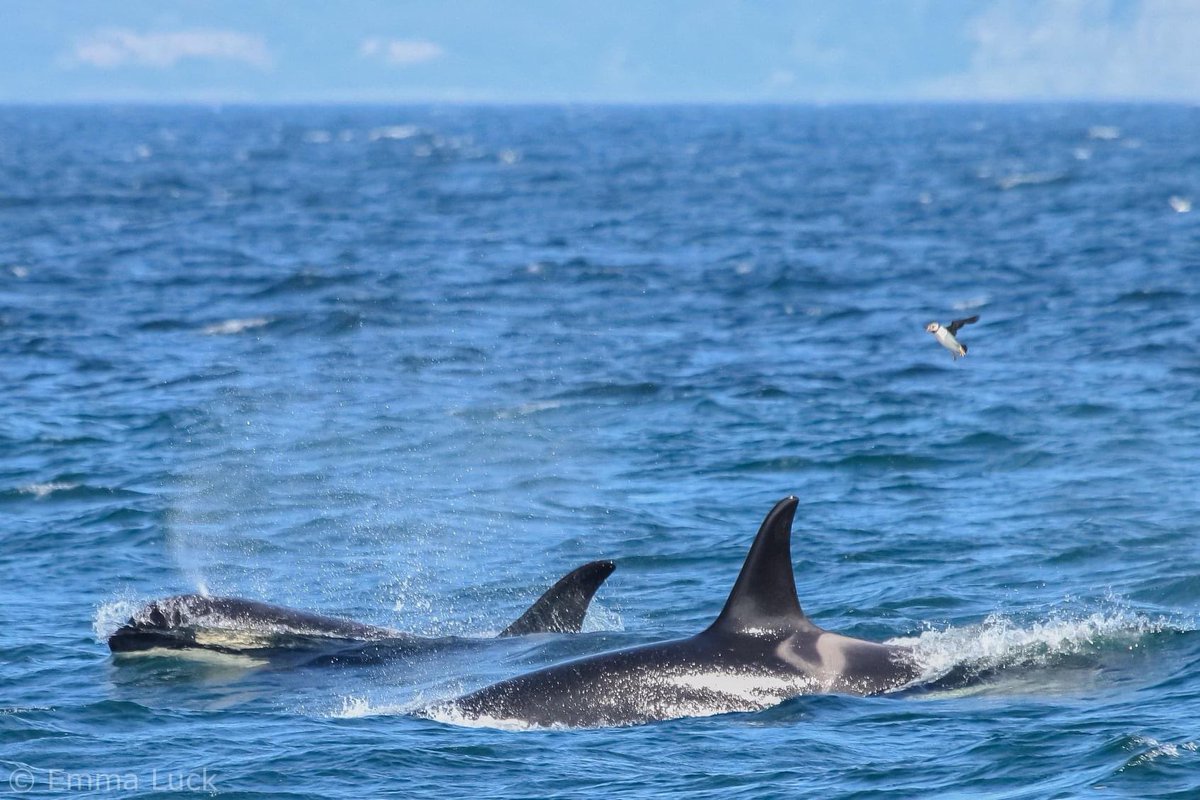One of the greatest privileges of working with wild killer whales is getting to know their personalities. This is AP3 (right) and her calf, AP21 (left). I spent two summers getting to know them. A thread:
AP3 and AP21 belong to AP pod, a family of about 20 whales from southern Alaska. They were originally identified and documented by the North Gulf Oceanic Society.
They are so amazingly inquisitive and bold—they had a curious habit of “sneaking” up on our wildlife tour boat. They would dive around 100-200 yards away, and then disappear. Suddenly, BOOM! They would pop up right next to us, startling everyone on board.
They did this often enough that it became a predictable pattern. One day, I saw them approaching in the distance. I told the passengers, “Watch those two, they’ll probably appear next to the boat!” And right on cue, they did.
I never did figure out why they liked to do this. Part of me wondered if they were curious about the shrieks and squeals from the passengers, but I’ll never really know for sure.
Interestingly, some scientists have reported that young, female killer whales tend to be extremely curious and inquisitive up until they have their first calf. With a baby in tow, they often become more “serious.”
AP3 doesn’t seem to have lost her playfulness, even with AP21. Additionally, AP3 seems to also be the mother of AP12, an older juvenile whale. AP12, though, doesn’t seem to share their mother and sibling’s curious nature!
As scientists, we have to be careful to not anthropomorphize animals. That said, animals do have personalities, and sometimes they become very apparent when you spend enough time with them.

 Read on Twitter
Read on Twitter